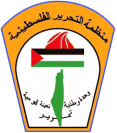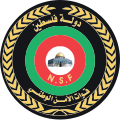
The flag of Iraq is the national flag of Iraq, includes the three equal horizontal red, white, and black stripes of the Arab Liberation flag, with the takbir written in green in the Kufic script in the centre.

The State flag of Yemen was adopted on May 22, 1990, the day that North Yemen and South Yemen were unified. The flag of Yemen is the Arab Liberation Flag of 1952, introduced after the Egyptian Revolution of 1952 in which Arab nationalism was a dominant theme. The Arab Liberation Flag of 1952 served as the inspiration for the flags of both North and South Yemen prior to unification, as well as for the current flags of Egypt, Iraq, Sudan, Palestine and Syria.
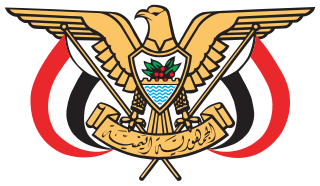
The national emblem of Yemen depicts a golden eagle of Saladin with a scroll between its claws. On the scroll is written the name of the country in Arabic: الجمهورية اليمنية or Al-Jumhuriyyah Al-Yamaniyah. The chest of the eagle contains a shield that depicts a coffee plant and the Marib Dam, with seven blue wavy stripes below. The flagstaffs on the right and left of the eagle hold the flag of Yemen.

The national flag of Egypt is a tricolour consisting of the three equal horizontal red, white, and black bands of the Egyptian revolutionary flag that dates back to the 1952 Egyptian Revolution. The flag bears Egypt's national emblem, the Egyptian eagle of Saladin, centred in the white band.

The current flag of Sudan was adopted on 20 May 1970 and consists of a horizontal red-white-black tricolour with a green triangle at the hoist. The flag is based on the Arab Liberation Flag of the Egyptian Revolution of 1952, as are the flags of Egypt, Iraq, Syria, Yemen, and Palestine and formerly of the United Arab Republic, North Yemen, South Yemen, and the Libyan Arab Republic.
As a result of the Syrian Civil War since 2011, there are at least two flags used to represent Syria, used by different factions in the war. The incumbent government of the Syrian Arab Republic led by the Ba'ath Party uses the red-white-black tricolour originally used by the United Arab Republic, while Syrian opposition factions such as the Syrian National Coalition use the green-white-black tricolour known as the ''Independence flag'', first used by Mandatory Syria.

The coat of arms of Germany displays a black eagle with a red beak, a red tongue and red feet on a golden field, which is blazoned: Or, an eagle displayed sable beaked langued and membered gules. This is the Bundesadler, formerly known as Reichsadler. It is one of the oldest coats of arms in the world, and today the oldest national symbol used in Europe.
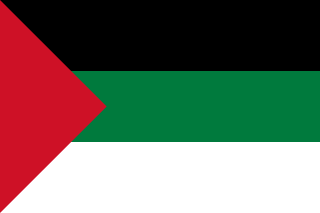
The pan-Arab colors are black, white, green and red. Individually, each of the four pan-Arab colors were intended to represent a certain aspect of the Arab people and their history.

The coat of arms of Egypt is known as the Republican Eagle or Egyptian Golden Eagle, is a heraldic golden eagle, facing the viewer's left (dexter). The eagle's breast is charged with an escutcheon bearing the red-white-blue bands of the flag of Egypt rotated vertically, whilst the eagle's talons hold a scroll bearing the official name of the state written in Kufic script. The earliest version of the Eagle of Saladin was that used as the flag of Saladin, the first Sultan of Egypt, whilst the modern version of the eagle was adopted during the Egyptian Revolution of 1952. Subsequently, the modern design of the eagle of Saladin was adopted as the coat of arms of numerous other states in the Arab World, such as the United Arab Republic, North Yemen, Iraq, South Yemen, the Libyan Arab Republic, and Palestine. The current eagle was modified in 1984 to its present form.

The flag of Palestine is a tricolour of three equal horizontal stripes—black, white, and green from top to bottom—overlaid by a red triangle issuing from the hoist. It displays the pan-Arab colours, which were first combined in the current style during the Arab Revolt, and represents the Palestinian people and the State of Palestine.

The eagle is used in heraldry as a charge, as a supporter, and as a crest. Heraldic eagles can be found throughout world history like in the Achaemenid Empire or in the present Republic of Indonesia. The European post-classical symbolism of the heraldic eagle is connected with the Roman Empire on one hand, and with Saint John the Evangelist on the other.

The Emblem of Iraq since the rule of Baathism features a golden black eagle looking towards the viewer's left dexter. The eagle is the Eagle of Saladin associated with 20th-century pan-Arabism, bearing a shield of the Iraqi flag, and holding a scroll below with the Arabic words جمهورية العراق.

Since 2011, Libya currently does not have an official national emblem. The Constitutional Declaration issued by the National Transitional Council on August 2011 defines the flag of Libya, but does not make any provisions for a coat of arms.

The current national emblem of Sudan was adopted in 1985.

The current coat of arms of Syria or coat of arms of the Syrian Arab Republic was adopted in 1980, following the 1977 dissolution of the Federation of Arab Republics, whose coat of arms had until then been used by its constituent states. This emblem consist of the Hawk of Quraish supporting a shield bearing the national flag of Syria, and a scroll of the words "Syrian Arab Republic". Since the start of the ongoing Syrian Civil War in March 2011, alternative coats of arms have been created by the Syrian opposition and the Federation of Northern Syria.

An Islamic flag is the flag either representing an Islamic Caliphate, religious order, state, civil society, military force or other entity associated with Islam. Islamic flags have a distinct history due to the Islamic prescription on aniconism, making particular colours, inscriptions or symbols such as crescent-and-star popular choices. Since the time of the Islamic prophet Muhammad, flags with certain colours were associated with Islam according to the traditions. Since then, historical Caliphates, modern nation states, certain denominations as well as religious movements have adopted flags to symbolize their Islamic identity. Some secular states and ethnic or national movements also use symbols of Islamic origin as markers of heritage and identity.

The Hawk of Quraish is a symbol which is found on a number of emblems, coats of arms and flags of several states of the Arab world. The traditions and recorded history about the Quraysh and Muhammad claim a falcon had been used as clan symbol. Therefore, several variants of the Quraishi hawk were and are seen in the flags, coat of arms, seals and emblems of several Arab states until today. In that meaning, the Hawk of Quraish is a rival to the Eagle of Saladin.
A national coat of arms is a symbol which denotes an independent state in the form of a heraldic achievement. While a national flag is usually used by the population at large and is flown outside and on ships, a national coat of arms is normally considered a symbol of the government or the head of state personally and tends to be used in print, on armorial ware, and as a wall decoration in official buildings. The royal arms of a monarchy, which may be identical to the national arms, are sometimes described as arms of dominion or arms of sovereignty.
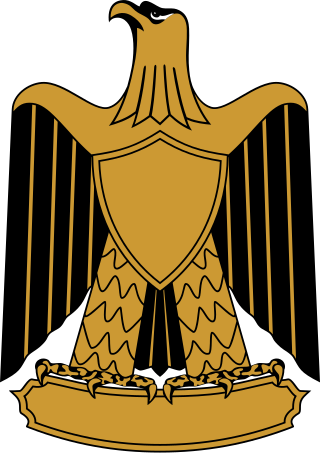
The Eagle of Saladin, known in Egypt as the Egyptian Eagle, and the Republican Eagle, is a heraldic eagle that serves as the coat of arms of many countries; Egypt, Iraq, Palestine, and Yemen. Since the 1952 Egyptian revolution, the eagle has been an iconic symbol of Egypt, and of Arab nationalism, particularly in Arab states that underwent anti-imperialist political change from the 1950s onwards. It was formerly the national symbol of the now defunct United Arab Republic, North Yemen, South Yemen, and the Libyan Arab Republic.

Kurds in Palestine are Palestinians who are of Kurdish ancestry.

